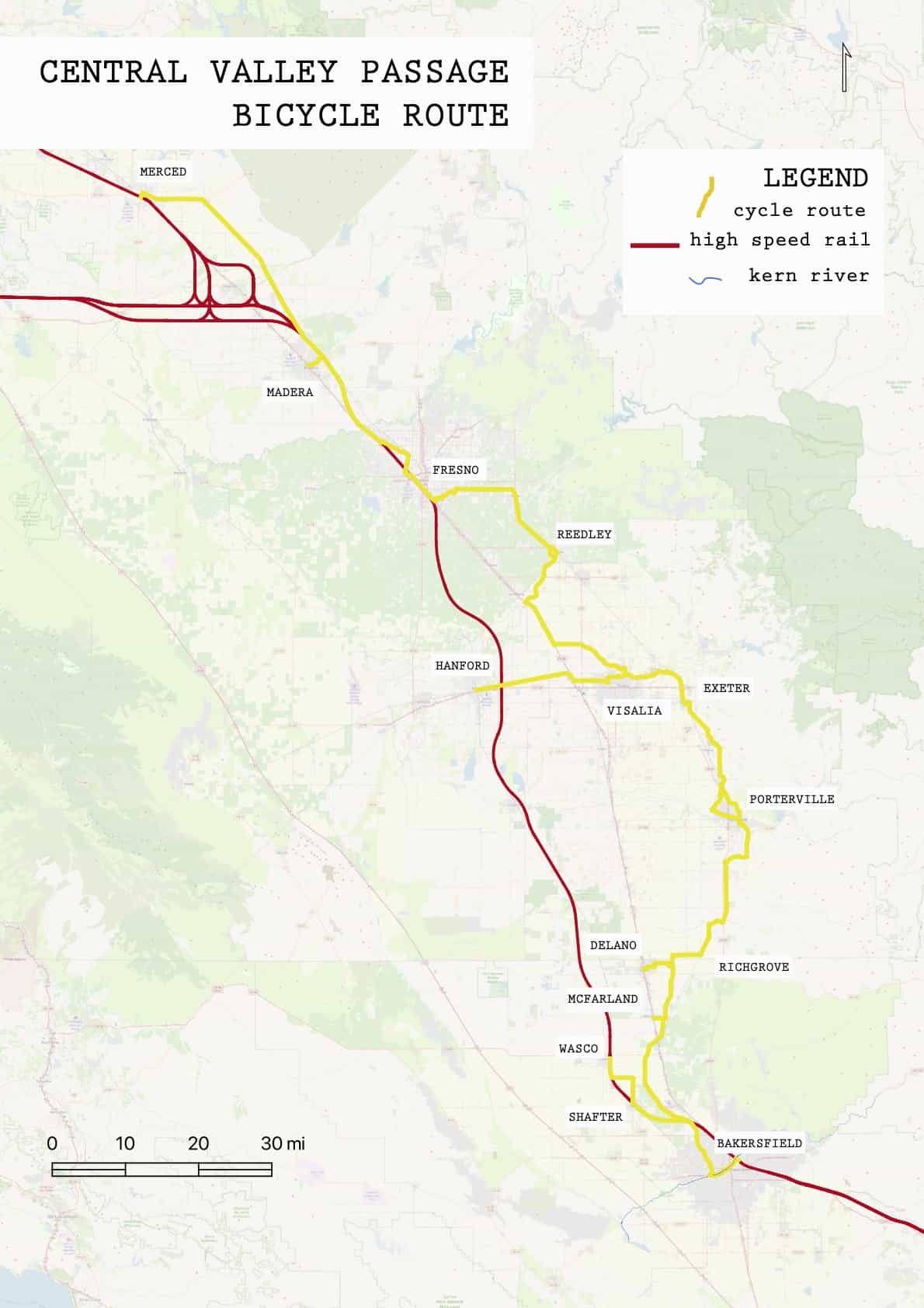The Central Valley Passage: CalBike’s Visionary Long-Distance Bike Route
Imagine getting on your bike in Bakersfield and riding all the way to Merced. You follow mostly separated and low-stress routes. Along the way, you pass through large and small Central Valley cities like Wasco, Porterville, and Madera.
Maybe you visit some rose gardens in Wasco, whose farmers grow a majority of all the roses grown in the United States. Or you detour for a few miles to check out some wineries on the Madera Wine Trail. You connect with High-Speed Rail (HSR) stations in Bakersfield, Fresno, and Merced. That’s the vision of the Central Valley Passage, a long-distance bicycle route proposed by CalBike’s Central Valley Project Team.
For much of 2020, CalBike, in partnership with the Kern Council of Governments, worked to plan active transportation connections to the planned HSR stations in Bakersfield, Fresno, and Merced. The project gets funding from a Caltrans Sustainable Transportation Planning grant.
The team’s most ambitious plan is a proposal for a long-distance bike route from Bakersfield to Merced, the Central Valley Passage. Once built, this bikeway will be an essential car-free connection in the Central Valley and an economic engine.

Bringing bicycle tourism to the Central Valley
The Central Valley Passage, once all segments are complete, will include about 265 miles of connected, low-stress bikeways. The route will attract bike riders who want the fun and challenge of a multi-day ride. Bicycle tourism can bring an influx of revenue for businesses in cities and towns along the route.
The Central Valley Passage isn’t only an asset to the cities in the valley. It is a much-needed amenity in California, where long-distance routes often involve segments along the shoulders of busy roads. A long-distance route that’s gentle enough for riders of all levels, with many places to stop along the way, will help more people experience the joy of traveling by bike.
Since the route will connect to the High-Speed Rail stations, visitors can reach the route by train. It’s a perfect recipe for a low-carbon vacation.
Vital connections for Central Valley residents
This long-distance route has even more significant benefits for the local community. The team designed the segments to connect suburbs to urban centers, so residents can use the routes to commute to work or travel between cities.
California has a poverty rate of 13%. Kern, Fresno, and Merced counties have poverty rates of 20% or more. Access to more affordable transportation options will promote social equity, particularly in areas that are poorly served by transit.
In addition, increased bicycle mode share will improve the health of all Central Valley residents. Air quality in the San Joaquin Valley doesn’t meet EPA standards. Half the region’s toxic pollution is caused by burning fossil fuels for transportation. Low-stress bike connections will give residents more choices to get around without adding to the region’s air pollution problem. Also, the physical activity of bicycling improves the health of people who are able to ride.
This ambitious plan is just one of the proposals that CalBike’s team has created to make the Central Valley more bikeable. For more on the project, visit our Central Valley Project pages.


